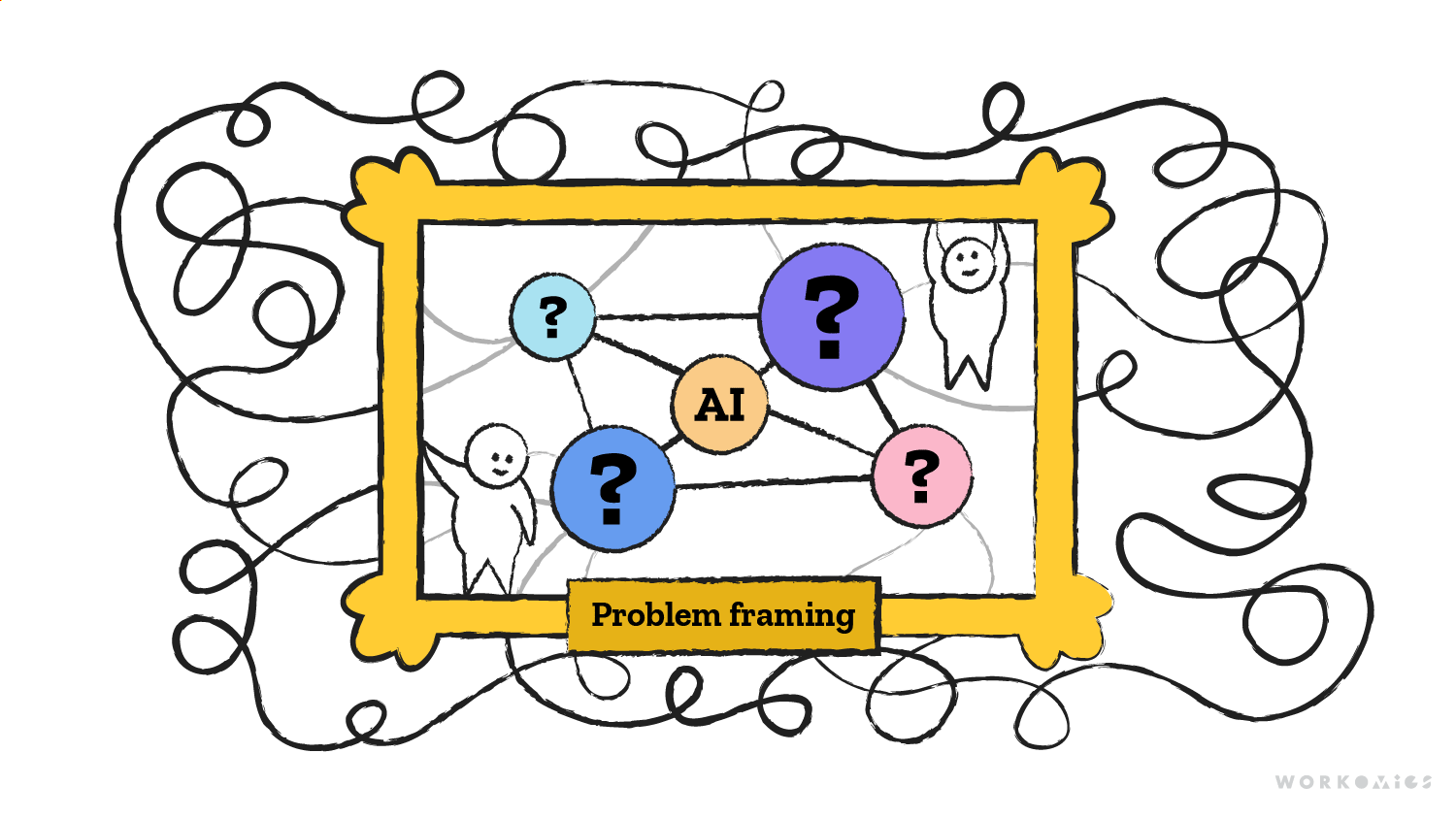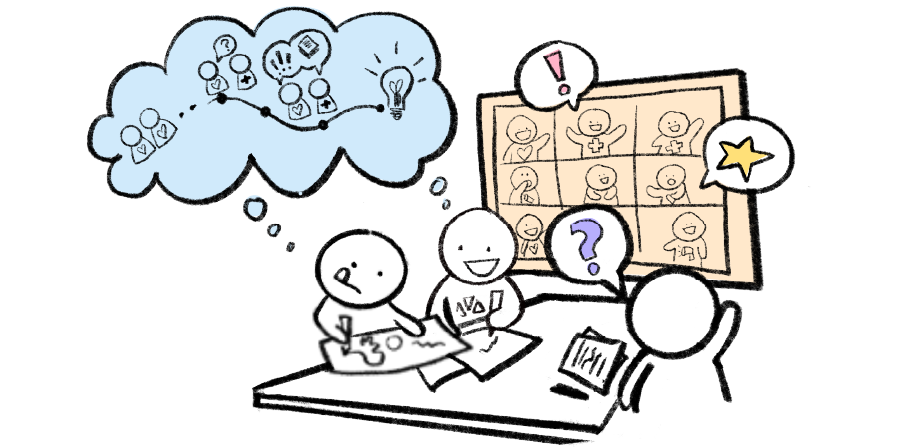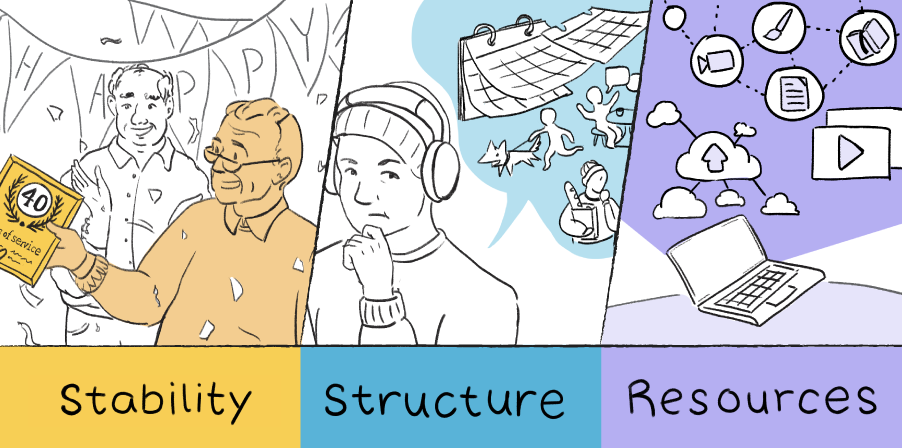Meet Daisy: An AI Case Study
Daisy* is a Regional Sales Enablement Specialist for a large multinational in a heavily regulated industry. She works with sales executives in her region to help them build skills and deliver better outcomes for customers and the business. Daisy comes to the role with deep subject matter expertise: her previous roles in the company include being a sales executive herself and managing sales executives as part of a cross-functional team.
The core of Daisy’s job is meeting with sales executives to coach them, educate them, and help them troubleshoot. Once a quarter, Daisy runs a more formal workshop that brings small groups together for an in-person learning day.
Daisy’s company recently rolled out a generative AI model; under the hood, it’s one of the more popular commercial models, customized for the organization. The tool is available to everyone in the organization, but so far it’s been presented as a tool for experimentation. Daisy is the kind of person who loves exploring new ways of working, so she’s eager to try out the new tool.
Daisy, meet genAI
With this quarter’s workshop coming up, Daisy notices that her region’s sales data are lagging the country for one specific product. Having done the role herself, Daisy has no trouble pinpointing the issue — it’s a more complex product for the sales executives to wrap their heads around, and customers in her region tend to have a deep skepticism of products like this. There is a product team who owns training content, so Daisy turns her attention to the workshop itself — but this time with GenAI.
“I find it’s really helpful to invite the AI to ask me additional questions,” says Daisy. “I won’t just ask for a workshop agenda and give it my requirements. I’ll always finish with something like, ‘please ask me anything else you think would be helpful for creating the agenda.’”
“In this case, the AI came back with questions about the experience of the workshop participants, whether it was remote, hybrid, or in-person, and a few other details. I really feel like that back-and-forth exchange creates much better output.”
“The workshop agenda was fantastic. It gave me an icebreaker activity and a bunch of suggestions for ways to make the session more interactive for the sales execs. A few of the suggestions wouldn’t work, but I just cut those out and adjusted accordingly. The whole thing took me ten minutes.”
For now, Daisy’s corporate genAI tool will only output plain text, so she builds the deck for the workshop herself. But Daisy continues to think about how she can incorporate AI into her workshop prep. For the customer role-play exercise, she has AI generate the customer profiles.

“It’s a perfect task for an AI,” reflects Daisy. “Because they’re meant to be fictional, I don’t have to worry about hallucinations.” The genAI at Daisy’s company has two different settings: Inventive and Accurate. Daisy used the “Inventive” setting for all the workshop prompting, but she has used “Accurate” in other instances, where she’s looking for more of a succinct summary while minimizing the risk of inaccuracy.
After the product team delivers the content to the sales execs, Daisy takes the zoom call transcript and prompts the AI:
Use the content from this text to prepare a series of questions and answers that can be used in a quiz show format in a workshop.
“The AI did a great job coming up with the quiz questions, and it probably saved me about 30 minutes. I just copied and pasted them into the presentation.”
GenAI workshop, meet the real world
Daisy delivers her workshop four different times for different groups of sales executives, and it is very successful. Afterwards, several sales execs admit to having been less comfortable with the product category and said they found the workshop very valuable. Some even requested the workshop be repeated for other products.
How about the AI component? “The quiz show format was a huge enhancement. The sales executives really got into it. That was 100% the bot — coming up with the idea, producing the quiz. I wouldn’t have done it on my own.”
Apart from that experiential element, though, Daisy thinks the main benefit was time-saving. “Ultimately, I would have delivered a workshop on that topic with or without AI. But I spent less time on prep, and I think the participants enjoyed the experience more.”
Daisy sits on her company’s AI committee, and she brought her workshop forward as a case study. There was a lot of interest, and people were quick to glom on to best practices like “encourage the bot to ask you further questions.” For Daisy, the AI has so far been nothing but additive to her work.
“For me, it’s all about the time I spend with my sales execs. The time I saved with AI is golden, because it lets me spend more time actually talking to my sales execs, and less on the prep.’
Lessons Learned from Daisy
1. To get the most out of AI, emphasize the human skill of problem framing
People sometimes refer to prompting as a skill, or talk about “prompt engineering.” Daisy certainly finds that the specifics of a prompt can make a difference, especially for tricks like inviting questions from the AI. However, the real human skill is much broader than that: problem framing.
Problem-framing is a well-known element of most human-centred design methodologies. The idea is to come up with a frame that is broad enough to invite many possible solutions, but narrow enough to be actionable. In design, they are often termed “How Might We?” questions, and they are not the start of the process, but rather something that happens partway through, informed by research into the problem space, business priorities, and customer needs. It’s common to cycle through multiple How Might We options before moving forward.

In Daisy’s case, we see the power of human-driven problem framing. Based on a combination of data and her own insight , she articulated the challenge: “How might we help sales executives more effectively present Product X to reluctant customers in this market?” It was only with this frame in place that the AI became a valuable tool. Then, Daisy could leverage AI for the workshop agenda, the role-play customer profiles, and the quiz show content.
In any organization, there is a wealth of tacit information held in the heads of individuals and inaccessible to generative AI. Having people like Daisy frame problems grounded in their own insight and knowledge allows AI to become a more valuable tool for the organization.
2. To make AI use rewarding, prioritize human needs for self-determination
Daisy is very clear on the benefits of AI for her: less time spent on prep and PowerPoint decks means more time spent on real human interactions. Armed with the AI, Daisy chose to use it to make more engaging in-person experiences for her stakeholders: add a quiz show! Put in an ice-breaker! Make those role-play case studies more realistic!
We have seen this play out elsewhere. As AI-driven technology has become increasingly proficient at reading medical scans, the number of radiologists hasn’t declined. Rather, radiologists spend more and more time on human interactions — teaching, consults, patient procedures that rely on imagery. Given a choice, people tend to use AI to boost the time they spend with other people, increasing their feelings of relatedness.
“Given the choice” is an important element here. No one is mandating Daisy use AI, either explicitly (AI usage informing performance reviews) or implicitly (productivity targets that are impossible without AI.) She retains autonomy over when and how AI is incorporated into her workflow.
With that autonomy, Daisy chooses to deploy AI in an area of relative weakness: workshop design and facilitating. AI is a way of bolstering and extending her expertise in products, customers, and sales, giving her newfound feelings of competence in the workshop domain (and probably in the domain of AI too!)

Relatedness, autonomy, and competence, are often cited as keys to human motivation and flourishing. When AI is deployed in ways that respect those three core human needs, it can make jobs better and more rewarding. But we certainly see examples where AI is implemented without regard for self-determination. Software engineers who are required to use AI have their autonomy severely limited, while the AI supplants their core expertise, lessening their feelings of competence. Often the result is less time spent with coworkers and teammates, lessening a sense of belonging.
AI that respects human needs for relatedness, autonomy, and competence can be a force for good. But if the goal is mere efficiencies without regard for self-determination and motivation, the result may be short-term financial savings, but a loss for team culture, individual motivation, and sustainable growth.
3. To make AI a vector for lasting change, introduce it incrementally
At Daisy’s organization, AI is being introduced incrementally:
- The current AI won’t give her PowerPoint slides — just plain text.
- Technical training content continues to be produced by human beings.
- Lessons learned from using AI are being shared through formal organizational channels
You could instead imagine a big-bang approach to AI: Let the AI determine the focus area for the workshop, generate the content, perhaps even deliver the workshop. Roll it out everywhere all at once, with no mechanism for crystallizing best practice or course-correcting mistakes. The value of a big-bang is that you scale AI faster. The downside is that… you scale AI faster.
Organizations are incredibly complex systems. Small changes in one part of the system can have unexpected ripple effects elsewhere, and those effects may take some time to fully emerge. When the changes are more gradual, as they are for Daisy, there is a chance to see the short- and long-term implications unfold, amplify the things that work, and roll back the things that don’t.
Imagine it turns out that an AI outputting fully-baked slides leads to inaccuracies or non-compliant content — problematic in a highly-regulated industry! Because of their incremental approach, Daisy’s company would be able to more quickly identify such consequences, and fine-tune their AI toolstack to one that finds the right balance of risk and reward.

By contrast, throwing maximal AI tools at everything all at once makes it harder to identify what’s working, and opens the possibility of both catastrophic consequences and outsized gains. For some organizations, the promise of disruptive transformation might be worthwhile, but for many (most?), a more incremental approach will enable more lasting change.
Gradual introduction of AI in isolated parts of the broader system makes it easier to see where and how AI adds value. That, in turn, makes it easier to build advocates for AI and drive voluntary adoption. But just as importantly, an incremental approach lets us see where the costs of adopting AI outweigh the benefits. It creates space for constructive criticism, so that the unhelpful aspects can be adjusted, or rolled back.
The annals of technology-led transformations are littered with big-bang systems changes that crashed and burned. In most of the ways that matter, AI is just another technology, so most organizations will be best served by a phased approach that lets them go slow, test and learn, and then propagate and iterate.
Indeed, the core of Daisy’s case study is that she and her organization are approaching generative AI the way you might tackle any kind of new method or tool or tech. They are:
- Leading with curiosity and experimentation.
- Letting the people on the ground find real use cases in ways that make sense for their roles and their business objectives.
- Applying best practices in change management.
Perhaps it doesn’t sound as sexy or as innovative. But it is, by and large, how sustained transformations come to pass.
* This is a real case study; some identifying names and details have been changed to preserve confidentiality.
Our other ideas worth exploring
Skills for Scaling Start-Ups
Scaling start-ups need their employees to build skills in stakeholdering and organizational alignment, as the team grows.
Hybrid co-creation in pharma and biotech
Bringing internal participants together for a hybrid co-creation creates shared intentions and speed to market.
Negotiating a New Bargain with Work
The old bargain: give up a large measure of your autonomy and flexibility. In return, we’ll give you stability, structure, and resources.




